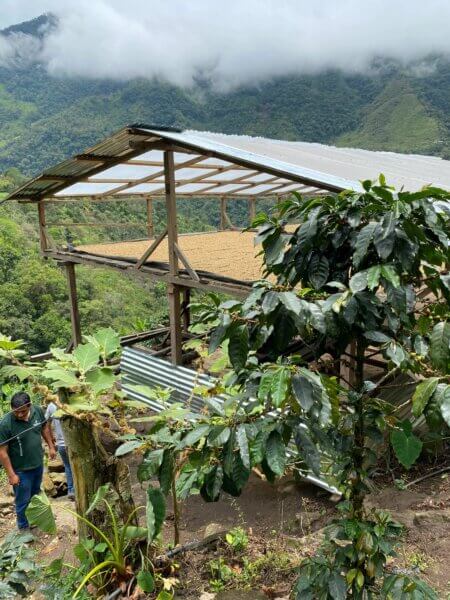Cajamarca in Northern Peru has been a part of our work since 2017. Much more easily accessible than many regions in which we work, the area offers clear quality and logistical benefits.
Flavor-wise, Cajamarca coffees tend bright and sweet, with high tropical citrus notes like sweet lime and Meyer lemon, subtle but distinct florality like peach blossom and apple blossom, and sweetness like honeys ranging from light to dark. Like Amazonas (also in Northern Peru), the climate tends cool and humid, slowing both cherry maturation and drying for the fullest flavor development possible.
Terrain & history
In the realm of modern Peru coffee, Cajmarca has it all. Quality is fantastic as detailed above, and access is profoundly developed in comparison to the regions we usually gravitate towards.
Much like the highest heights of the Amazonas jungle, the highest areas of these provinces remained isolated for a long time; it was only at the beginning of the last century that migrants from the Andes of Cajamarca and Piura populated all these lands as they are now. Like Amazonas, improved access roads and modernization over time have helped the coffee trade thrive.

Modern growth in coffee & beyond
Every year’s visit to Cajamarca brings new, positive developments. The producers work to improve their coffee each year, replacing Catimore with other varieties that offer better cup quality, improving cultivation techniques, increasing productivity through more spacing between plants, investing in processing infrastructure, and more.
Farmers in this area know they have a privileged land and altitude that other regions lack and try to make the most of their situation. There’s an air of healthy competition within producer communities that drives a lot of this improvement, as well as wages that typically allow for reinvestment.
The arrival of phone and internet gave the region a further boost. Before these advents, producers’ children had to travel long distances from home to access education and opportunity, but now these opportunities are accessible locally. A clear example of this is one producer partner, a 28-year-old man who works towards an online accounting degree on nights and weekends. Not having to leave in order to learn means he can stay with his parents and continue to work the farm, while contributing new knowledge to the family that they wouldn’t otherwise have access to. The presence of younger generations on the farms is vital for their continuity, since without them these farms would likely be abandoned for better opportunities elsewhere.
| Interested in sourcing coffee with us? Reach out at info@redfoxcoffeemerchants.com. To learn more about our work, check out our journal and follow us on Instagram @redfoxcoffeemerchants, Twitter @redfoxcoffee, Spotify, and YouTube.
|
